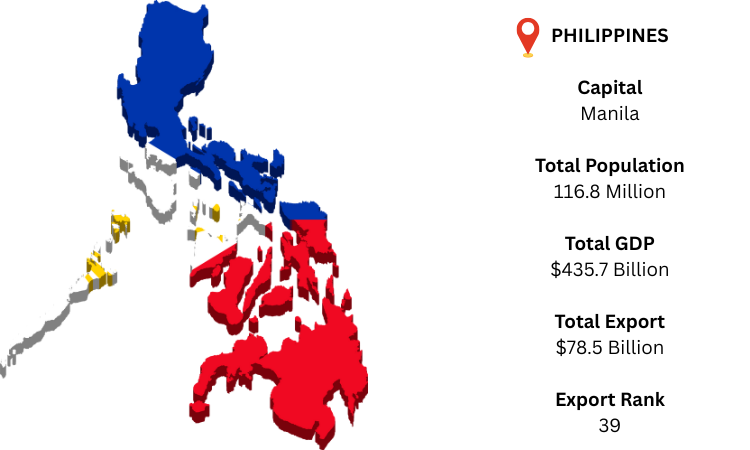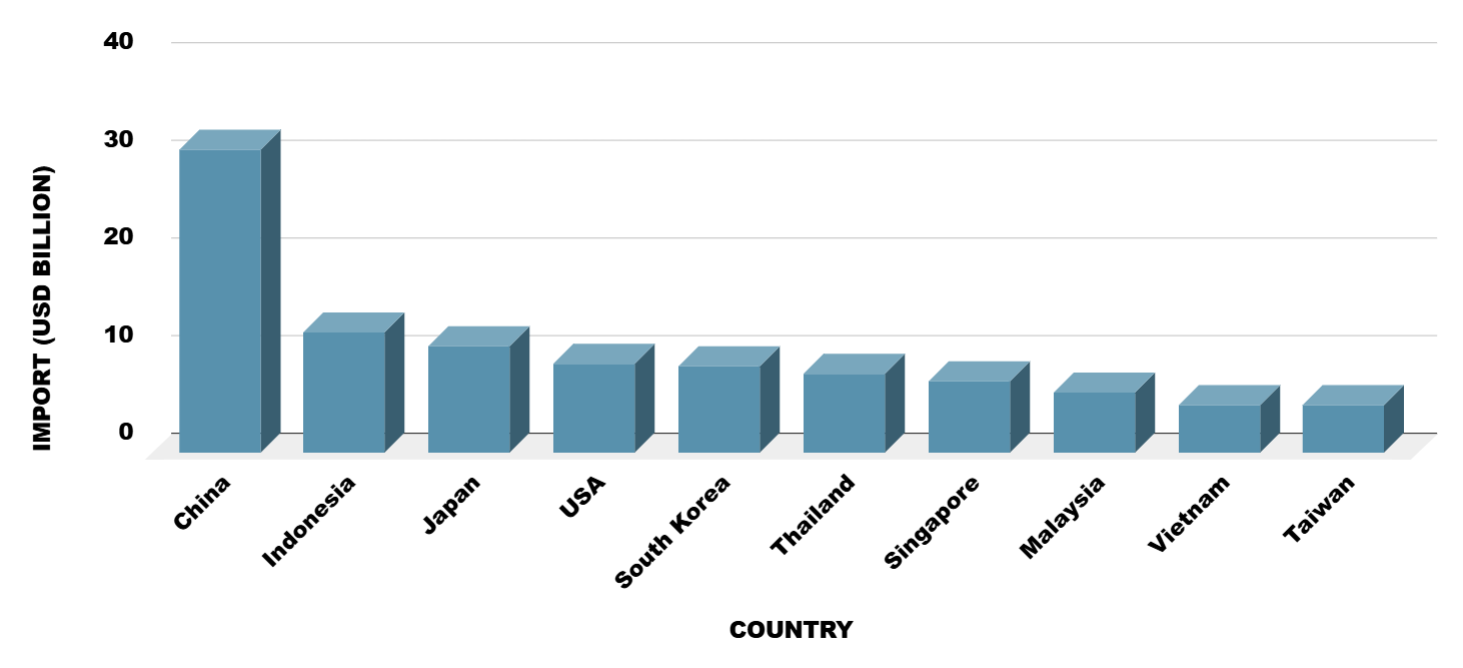With more than 7,000 islands, the Philippines is an archipelagic country in Southeast Asia that is mostly populated by big port cities like Cebu and the capital, Manila. Its GDP was projected to reach USD 403 billion in 2024, while its total imports reached USD 134.9 billion. As per Philippines import data, the nation continued to have a trade imbalance of about USD 61.9 billion.
As per Philippines customs data, China accounted for around 23% of imports, followed by Indonesia (9.2%) and Japan (8.2%). The country's manufacturing, energy, and infrastructure demands were reflected in the top imported items, which included industrial machinery, mineral fuels and oils, and electrical machinery & equipment.



